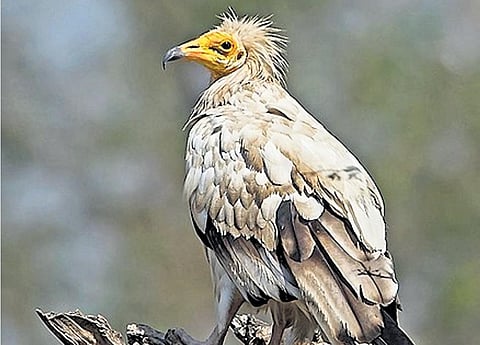

DEHRADUN: For the first time in Uttarakhand, four species of vultures will be studied closely by attaching satellite tags to them. This predator-category bird is on the verge of extinction. The International Union for Conservation of Nature (IUCN) has classified them as endangered birds. The forest department has sought permission from the government to tag the birds for the study to be held under Rajaji and Corbett Tiger Reserves.
Sameer Sinha, chief wildlife warden of the forest department, told this newspaper, “These four predatory birds belong to scheduled forest species. The Wildlife Act provides grant of special purpose licences in such cases, after which permission of the state government is required for education and research. “In this sequence, permission has been sought from the government to put satellite tags on birds,” Sinha said.
Dr Saket Badola, director of Rajaji Tiger Reserve and nodal officer for the project, told this daily, “The study will be conducted under Rajaji Tiger Reserve in Garhwal and Corbett Tiger Reserve in Kumaon. In this study, “information about the habitat, location, migration, their route, living conditions related information will be gathered. In this regard, a letter has been written to the Principal Secretary of Forest and Environment on behalf of the Chief Wildlife Warden seeking permission for the study. The four species of vulture that will be studied in Uttarakhand are the red-headed vulture, the white-tailed vulture (white-rumped vulture), the white vulture (Egyptian vulture) and the Plas fish vulture species.
Director Dr Badola said, “These four predatory species of birds belong to a very rare category, but the good thing is that from time to time their presence has been found in different areas of Garhwal and Kumaon of Uttarakhand.” The forest department is serious about their conservation, under which extensive studies will be done on them and this project will run for the next three years.
According to sources in the forest department, no one has an exact figure for the number of vultures that play an important role in maintaining the environmental balance in Uttarakhand. The statistics manual of the state forest department shows their numbers for the year 2005, according to which “the number of vultures in protected areas is 1,272 and 3,794 outside protected areas, taking the total to 5,066”. This data has not been updated since 2005 and now the forest department has once again made up its mind to “peek into the world of vultures”.